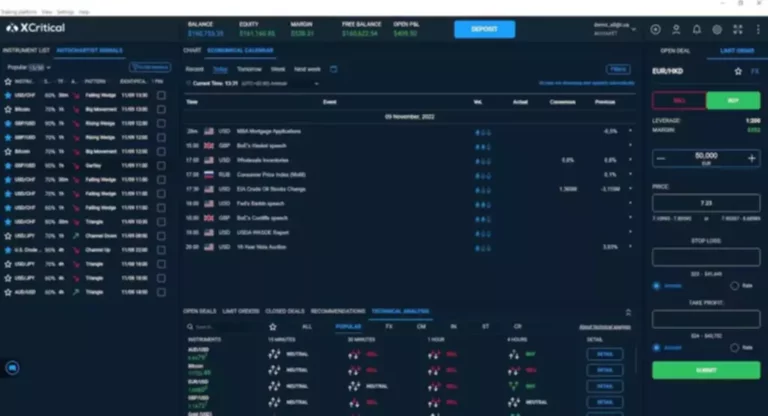
FinTech
Private Vs Public Blockchain: Key Variations Explained
The enterprise may additionally select to have the blockchain and supporting systems automate its invoicing, funds, bookkeeping, and tax reporting. Public blockchains enable anybody to view transaction amounts and the addresses involved. Users can handle their own digital identities, selecting what stage of information they wish to present to applications. Data sovereignty, where customers have the option to determine whether or not to disclose particular person transaction information. Godfreys’ core expertise is acceptability, adoption, and integration of Blockchain know-how in addition to Cryptocurrencies.
This legislation establishes a Blockchain Deployment Program to coordinate federal efforts, construct List of cryptocurrencies public-private partnerships, and support accountable innovation across key sectors. Personal blockchains also can talk with other blockchains through oracles or other options, but this creates security gaps via further connections. Personal blockchains generally do not permit exterior communications for security and information protection causes and are designed for use by a permissioned group. If you want studying about blockchain technology and need to know the means to make a Web3 web site, amongst different projects, try our Moralis Academy. We’ve received blockchain guides, Web3 ebooks, and full tutorials on all things blockchain and Web3. Whereas the expertise keeps its individuals anonymous, this can provide opportunities for criminally pushed activities similar to cash laundering and human trafficking.
Determine the problems you goal to unravel, whether it’s enhancing transparency, bettering data security, streamlining processes, or reaching regulatory compliance. Whereas immutability is a cornerstone of blockchain’s trustworthiness, it may be a double-edged sword for large businesses. Once knowledge is recorded on a public blockchain, it becomes nearly impossible to change.
The first miner to crack the code earns the proper to add the block to the blockchain, receiving a reward within the course of. This competitors ensures the safety of the network since any try and tamper with the blockchain would require immense computational power. Let’s dig deeper into the discussion of public VS non-public blockchain and uncover how they can empower your specific wants. By aligning your business objectives with the best sort of blockchain, you’ll have the ability to harness its potential to drive innovation, improve safety, and foster belief.
The decentralized nature of those networks requires all nodes to validate transactions, leading to slower confirmation instances and reduced transaction throughput. While transparency is a core characteristic of public blockchains, it comes at the value of restricted privacy. All transactions are seen to anyone on the community, doubtlessly exposing delicate information and transaction particulars. The most prominent use case for public blockchains is the creation and management of cryptocurrencies.
Personal Blockchains
DLT does not private blockchains examples retailer information in any one place, as an alternative distributing it across a peer-to-peer network. A non-public blockchain is a blockchain network where access is restricted to a selected group of individuals or entities. This is typically utilized by organizations requiring larger network and data privateness control.
Internet Capital Markets Explained: The Future Of International Monetary Systems
The Us Treasury has emphasized the necessity for pressing regulations on cryptocurrency trading and blockchain transactions, but the finite details are nonetheless unclear. The auditability and transparency of a public blockchain may be leveraged to create digital voting techniques. The immutability of blockchain records allows for expanded verification and security practices, bettering current perceptions of the democratic course of.
- A public but permissioned blockchain might take a couple of types, but it would usually be publicly viewable, and anybody could presumably be granted permission to participate or entry it.
- While cryptocurrencies and blockchain know-how present phenomenal opportunities for instant world transactions, they will simply turn into a automobile for criminal exercise.
- PoW requires individuals to resolve complex mathematical issues to validate transactions, making it an energy-intensive course of.
- Anybody can join and participate in a public blockchain network with out requiring permission.
- Internet Capital Markets try to reconstruct monetary infrastructure into an open, code-powered, international framework.
To verify it, network members, often recognized as miners, verify the transaction and add it to the shared ledger. This ledger is distributed throughout 1000’s of computer systems worldwide, preventing any alterations or fraud. Instead, cryptographic algorithms and a consensus mechanism guarantee transparency and fairness in all transactions. Personal https://www.xcritical.com/ blockchains can usually obtain quicker transaction speeds because of their controlled ecosystem.
Why Are Public Blockchains Not Fitted To Big Businesses?

These blockchains rely on a fancy pc program referred to as a consensus mechanism to validate transactions and keep the integrity of the distributed ledger. Public and personal blockchains supply contrasting approaches to transparency. Unpack the necessary thing differences between public VS non-public blockchains to discover the proper match for your wants. Private blockchains are sometimes most popular by businesses as a outcome of their controlled environments, faster transaction speeds, and compliance capabilities. In fields like provide chain management and trade finance, personal blockchains pave the greatest way for streamlined, cost-effective operations. The entities collaborating in a non-public blockchain network are known and often have established relationships.
Moreover, this explicit feature of the blockchain technically means that the blockchain is immutable. The solely rare case that may change this occurs if a hacker gains a majority of the network’s “hash power” (51%). A public blockchain is a permissionless, non-restrictive decentralized digital ledger obtainable to anybody to be used. Data saved on the blockchain and an outline of all transactions occurring are accessible to the public as part of a public blockchain. In all, a hybrid blockchain system helps a agency enjoy the closed consensus protocol mannequin, while additionally coming off with full transparency.
Moreover, knowledge remains private, which is crucial for businesses working with sensitive information. However, centralized management has risks—users must trust the network operator, and the chance of censorship or knowledge manipulation can’t be ruled out. Some of essentially the most well-known public blockchains include Bitcoin and Ethereum. When sending Bitcoin to someone, the transaction should be recorded in the blockchain.

A defining characteristic of personal blockchain development is its centralized nature. A single entity or consortium manages the network, making decisions and setting access rules. This centralized management streamlines operations and allows for quicker transaction processing compared to public blockchains. The continued evolution of public blockchain technology is paving the greatest way for groundbreaking developments in numerous sectors, from finance and supply chain administration to healthcare and governance. With the rise of decentralized purposes (dApps) and smart contracts, organizations can leverage these networks to create more environment friendly, transparent, and secure methods.
The healthcare sector would possibly use a non-public blockchain to exchange confidential affected person information among collaborating providers, improving a patient’s quality of care. A private blockchain for supply chain administration (SCM) creates a secure online document that tracks every transaction and motion of goods in real time, improving transparency and effectivity. A public blockchain is a decentralized and transparent network open to anybody. It is a distributed ledger that information transactions throughout a network of computer systems and is secured through cryptography. For those who need faster transactions, information privacy, and controlled entry, a private blockchain is the higher choice.
With fewer individuals, transactions course of quicker, as they don’t require the advanced validation process used in public blockchains. This additionally reduces costs, since there are not any miners, maintaining transaction charges minimal. One Other key profit is privateness, as only licensed users can access the info. This makes private blockchains a sensible choice for securing commerce secrets and protecting sensitive buyer info. All data in the network stay open for verification, and no one can modify or delete them. With a lot of participants, the system becomes extremely immune to attacks, making unauthorized changes or fraudulent transactions practically impossible.


